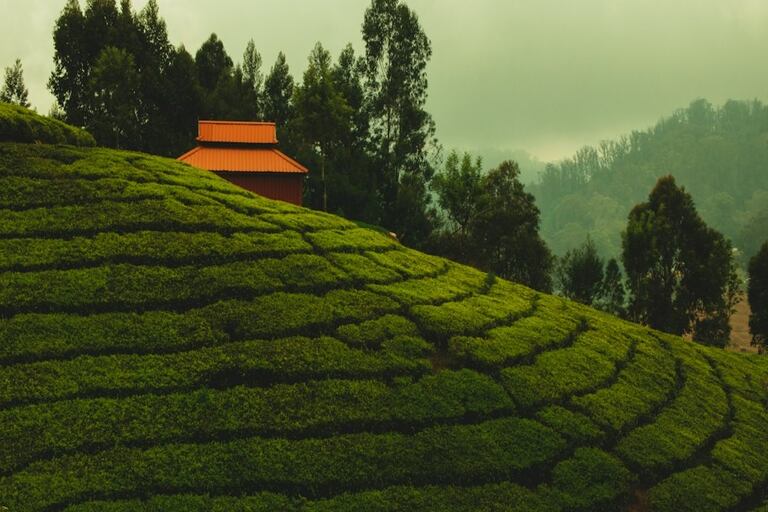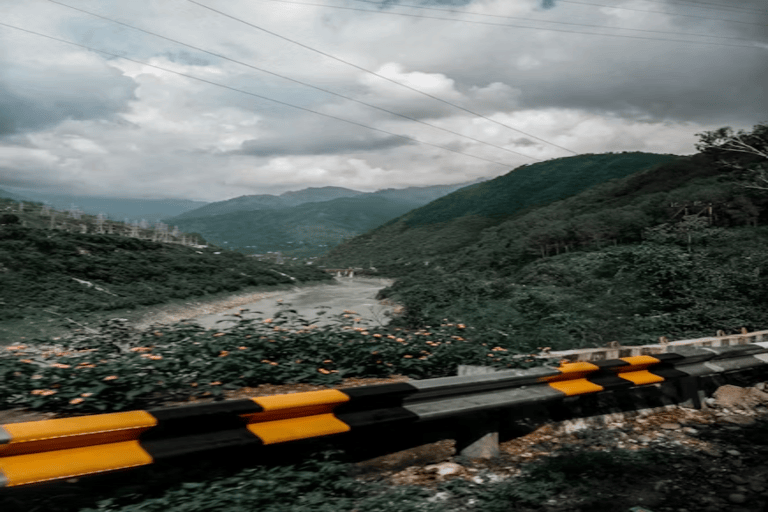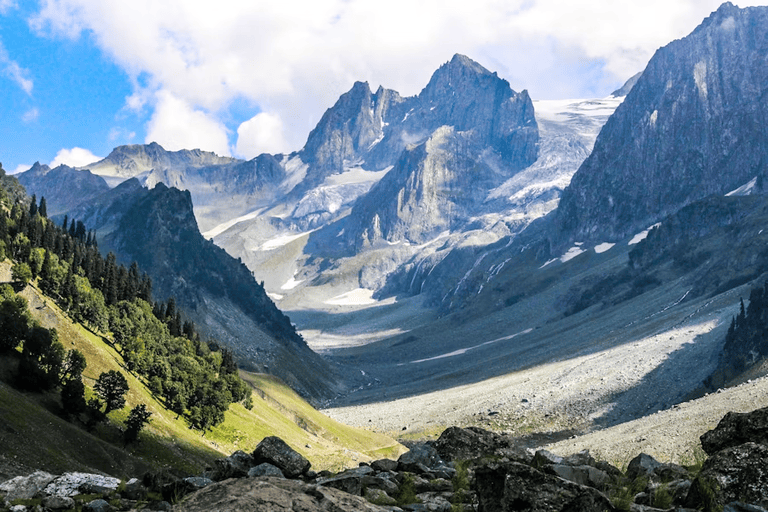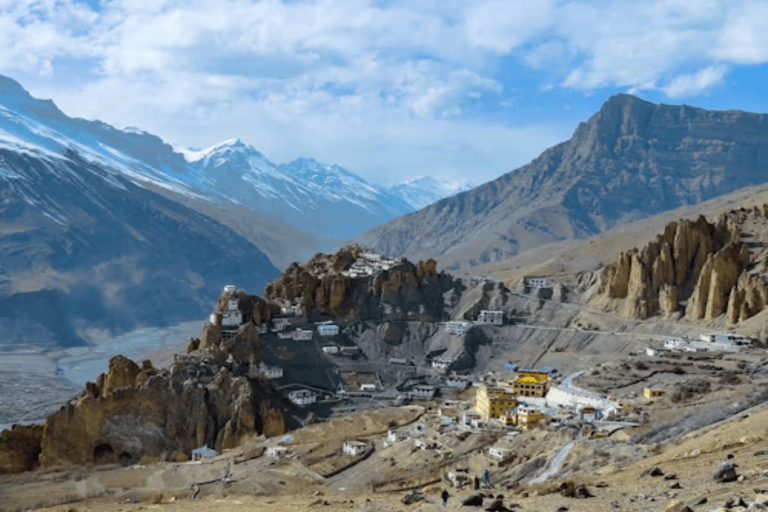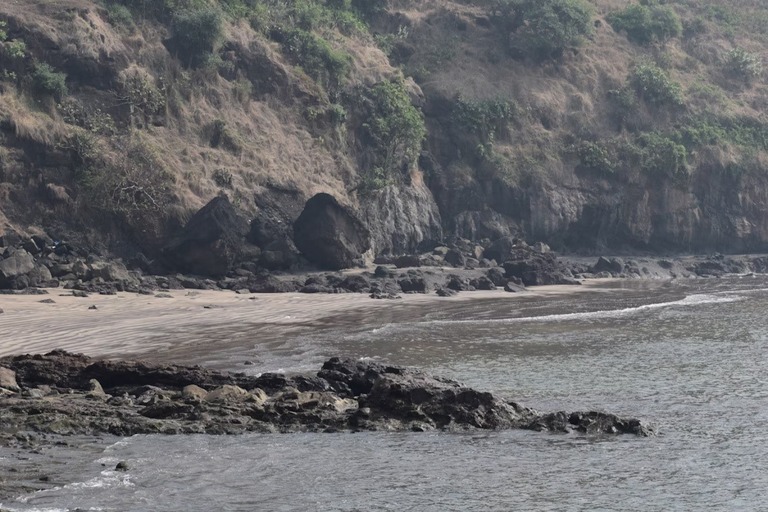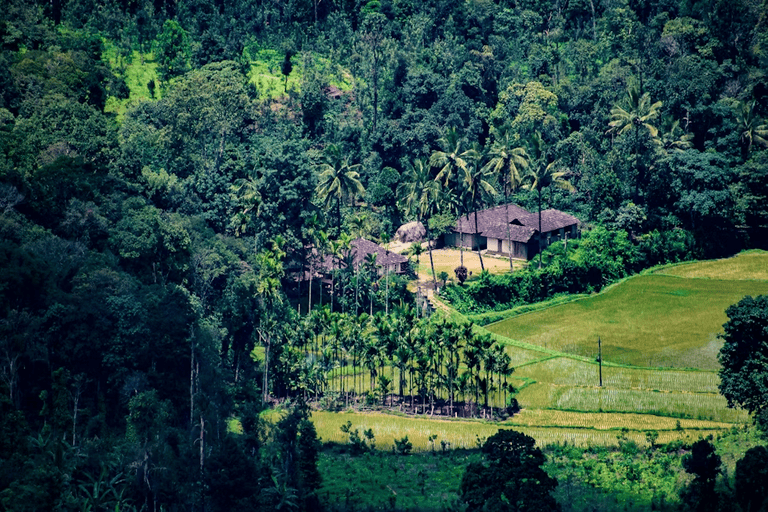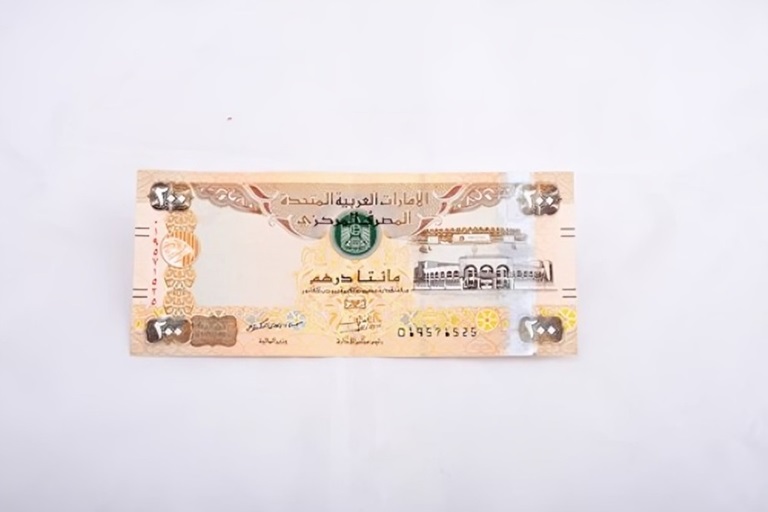
Celebrating Mahashivratri: Rituals, Fasting, and Importance of Mahashivaratri
Table of contents
Mahashivaratri, or the “Great Night of Shiva”, is one of the most significant Hindu festivals celebrated all across India, as well as in several other parts of the world by Hindu devotees. This annual religious festival is celebrated in the month of Maagha or Phalguna according to the Hindu Lunar calendar and brings countless people together with its cultural and traditional practices, such as puja, rituals, fairs, local events, etc. If you want an elaborate explanation of the importance of Maha Shivaratri and the key rituals associated with it, go through the contents of this page.
How is Mahashivratri celebrated?
Mahashivratri is about honouring Lord Shiva and seeking his divine blessings and guidance in life. However, how exactly the Mahashivratri celebration across India takes place differs from place to place and from community to community. In general, Hindus across the country celebrate Mahashivaratri with early morning rituals at Shiva temples, which include special invocations and Abhishekams on Shiva Lingams, followed by observing a fast and participating in nightlong vigil, which includes chanting prayers, listening to religious sermons, singing devotional songs, and so on. Alongside this, various religious-themed cultural programs, such as dramas, discourses, dance and music events, etc., are organised, and the people of the local community attend them. Social gatherings, exchanging of greetings and meals and partaking in charitable actions are some other features that are evident during Mahashivaratri throughout India.
Mahashivratri Rituals

Mhadev and paravti
Mahashivratri is illustrated by age-old traditions and rituals that are widely performed and observed on this auspicious day by countless devotees even now. The festival is marked by a handful of ritualistic practices, such as;
Jaagran or Nightlong rituals
During the night of the festival, devotees gather together in an all-night vigil, called “Jaagran” or “Jaagaran” and partake in devotional activities, such as the offering of prayers, uttering of religious chants, meditation, etc. Jagran is believed to signify dedication to Lord Shiva and, in a way, is allegorical of overcoming darkness and incognisance.
Making offerings
During Mahashivratri, devotees offer sacred Bilva leaves to Shiva Lingam. This is believed to have a calming effect on the Lord’s fiery energy. Flowers (except red ones) are also offered to the Lord, which symbolises devotion as well as the destruction of negative energies. When making offerings, be sure to ask the priest what to offer. Instead of Kumkum or Sindoor, you should use sandalwood while worshipping the lord. This is because offering red vermillion is said to be equivalent to insulting the lord. Hence, it should be avoided at all costs.
Fasting
The practice of Mahashivratri fasting is a key ritual followed by many adherents during this festival. It signifies self-control and is believed to purify one’s soul, body and mind, which in turn helps them to focus their thoughts and divert their energies on spiritual purposes.
Meditation and religious chants
The chanting of the lord’s name, along with meditative practice during Mahashivratri, is said to help followers establish a strong spiritual connection with their inner selves and experience the lord’s divine aura. When you visit the key locations where Mahashivratri is celebrated, you will keep hearing people continuously chant the Panchakshara mantra, “Om Namah Shivaya”.
Maha Rudrabhishek:
This is a edic ritual followed by priests and devotees during Mahashivratri across India. It involves the ritual bathing of Shiva Lingam with milk, honey, curd ghee, etc., all while chanting religious mantras. This ritual is said to bring peace, growth, prosperity and success in one’s life.
Shiva Darshan:
During Mahashivratri, prayers are offered both at home and in temples. It is a great time to go on Lord Shiva temple visits, i.e., Shiva Darshan, seek blessings from the god, talk to priests and other devotees, witness and engage in ritualistic practices, etc. According to the Puranas, one should avoid completing a full circle around the Shiva Lingam. Instead, it should be a semi-circle (half-circumambulation) and then return to the starting point.
Types of Mahashivratri Fasting
Fasting, or “Vrat”, is a major Mahashivratri ritual observed by devotees. However, many have the misconception that it means not eating anything throughout the day of Mahashivratri, but that is not the case. There are mainly three types of Mahashivratri fasting observed by devotees during the festival. They are;
Phalahara Vrat

Faral
During Mahashivratri, devotees who partake in this type of fasting abstain from eating certain types of food, which include pulses, grains, and non-vegetarian food. Instead of these, they stay on a strict diet that includes fruits, nuts, yoghurts, milk, lassi, water, coconut water, and coffee. Just remember that these foods should not be salted. The food allowed in Phalahara Vrat is considered pure and can help facilitate spiritual growth.
Nirjala Vrat
On the other hand, Nirjala Vrat is another important but more strict version of fasting that many devotees observe during Mahashivratri. Nirjala Vrat literally means waterless fasting. In this kind of fasting, devotees abstain from not only solid but also liquid food, including water. It is observed throughout the day and night. It is very challenging, but devotees still manage to successfully observe it all while partaking in other ritualistic activities through sheer devotion and unwavering mental and physical strength.
Samapta
This type of fasting involves eating the food allowed under Phalahara Vrat, such as fruits, milk, nuts, water, etc., and a one-time meal consisting of sweets, such as sooji ka halwa, rice kheer, jaggery kheer, etc.
When observing Mahashivratri at home, make sure to place the idol or picture of Lord Shiva in the northeast direction of the house and make offerings, followed by performing aarti. Also, if you are observing a fast that allows the consumption of fruit juice, consider avoiding packaged juices. It’s because they may contain added preservatives and salt.
Importance of Mahashivratri and why it is celebrated

Mhashivratri
Must Read : Mahashivratri 2025: Date, History, and Significance Across India
Mahashivratri, or the “Great Night of Shiva”, has immense spiritual and cultural importance. Some legend suggests that this festival is said to be the night marking the auspicious union of Lord Shiva and Devi Parvati through marriage, while other suggests that it marks the night when the Lord performed Tandava Nritya, the celestial dance of creation, preservation and destruction.
There is another popular legend associated with Mahashivaratri that many may not know. According to this legend, it is believed that Mahashivaratri marks the day when Lord Shiva consumed the Halahala that was produced during Samudra Manthana. Otherwise called “Churning of the Ocean”, Samudra Manthan is elaborately explained in Vishnu Purana. This happened when the Devas and Asuras, as commanded by Lord Vishnu, began churning the ocean in search of the immortality nectar. During this event, Haalahala, a pot of toxic poison capable of wiping out all creation, came out of the ocean. The Devas approached Lord Shiva and requested him to take care of this poison. To protect the three worlds, Lord Shiva consumed the poison. As soon as he did it, Devi Parvati pressed her hand on his throat so the poison wouldn’t reach the stomach and spread to the rest of the body. The poison stayed in his throat, turning it blue, hence giving the god the epithet “Neelkantha”, meaning the “blue-throated one”. As therapy, the Devas were suggested to keep Mahadev awake through the night, which they did, and once morning came, the Lord Shiva gave his blessings to all the Devas. Hence, it is believed that the vigil associated with Mahashivratri is linked to this event.
All in all, it brings people of different backgrounds and social statuses together in performing ritualistic practices and being part of the Mahashivratri celebration. Through offerings, prayers, religious chants, fasting, etc., devotees get an opportunity to purify their mind, body and soul, align them to reach higher consciousness, connect with the divine presence of the lord and seek his blessings and guidance in life, to overcome challenges.
Conclusion:
The importance of Mahashivratri in Hinduism and India is immense. Lord Shiva represents inner strength and the ability to overcome difficulties and challenges in life. By fasting, making offerings, and taking part in other ritualistic practices, devotees get to cleanse their minds, body and soul and create a stronger bond with their inner selves and the Lord, which is said to help them overcome difficulties, eradicate negativities and reach their purpose in life.
Table of contents
Trending blogs for you
Recommended Articles for you
15+ Places to Visit in Ooty – The Queen Of Hill Stations
Reading Time: 9 minutes 0 0 How does this sound to you: bright green soothing slopes, mystical pathways, and clouds that kiss your hair? Ooty is replete with such immense beauty and has enough activities and elements to keep every traveler happy and satisfied.One […]
PAR: Hong Kong Visa Myths Busted
Reading Time: 6 minutes 0 0 Hong Kong, the Special Administrative Region of the People’s Republic of China (PRC), is increasingly becoming one of the most sought-after international holiday destinations for Indian tourists. This has something to do with its vibrant culture, iconic skyline, […]
Choosing the Best Forex Card for Your Travel Needs
Reading Time: 9 minutes 0 0 Travelling abroad can be an exciting adventure, but managing your finances while on a trip can sometimes be challenging. When visiting different countries, paying in local currency is essential to avoid the pitfalls of unfavourable exchange rates and […]
Top Zero Markup Credit Cards for Forex Transactions in India in 2025
Reading Time: 9 minutes 0 0 Traveling internationally often comes with various expenses, and one of the most significant is currency conversion. Traditional methods, such as exchanging cash or using credit/debit cards, usually involve hidden charges, hefty conversion fees, and unfavourable exchange rates. Enter […]
Why You Should Consider Trading Forex: 12 Key Insights
Reading Time: 5 minutes 0 0 Foreign exchange trading, commonly known as forex trading, has grown to become one of the most popular forms of trading worldwide. With a daily trading volume exceeding $7 trillion, it represents the largest and most liquid financial market. […]
Key Differences Between Regular Bank Accounts and Overseas Bank Accounts
Reading Time: 5 minutes 0 0 In a globalized world where people frequently travel, migrate, or conduct business across borders, understanding the distinction between regular bank accounts and overseas bank accounts is crucial. While both serve the primary purpose of storing and managing money, […]
Doorstep Forex Delivery and more by Thomas Cook
Reading Time: 4 minutes 0 0 Foreign Exchange today is one of the basic requirements for not only business travellers but tourists as well and getting a Doorstep Forex Delivery when you are really running late is truly a blessing! This is where reputed […]
Hotter Than Hot: Exploring India’s Hottest Destinations
Reading Time: 10 minutes 0 0 Exploring the hottest places in India reveals more than just extreme temperatures; it uncovers a rich tapestry of cultures, intriguing histories, and breathtaking landscapes. From the arid deserts of Rajasthan to the blazing plains of Uttar Pradesh, each […]
10 Best Places To Visit In July In India On A Budget
Reading Time: 11 minutes 0 0 July, with its refreshing monsoon showers, transforms India into a vibrant tapestry of lush greenery and spectacular landscapes. For those who wish to explore the beauty of this transformation without causing a dent in their wallets, there are […]
Top 10 Coldest Places In India You Must Visit This Winter
Reading Time: 8 minutes 0 0 As winter approaches, the quest for crisp air and snow-covered landscapes draws many away from India’s typically mild winters. Embrace the season by venturing into the country’s coldest regions, where each destination offers a unique blend of natural […]
12 Best Places To Visit In November In India In 2025
Reading Time: 8 minutes 0 0 November is a month of vibrant transitions in India, offering an array of travel experiences from the cool Himalayan foothills to the warm beaches of the south. If you’re planning your travel itinerary for November 2024, India presents […]
10 Stunning Places To Visit In October In India To Experience the Autumn
Reading Time: 11 minutes 0 0 10 Stunning Places To Visit In October In India To Experience the Autumn October marks a magical time in India when the monsoon rains have ceased, and the landscape bursts with vibrant colours, making it an outstanding month […]
September Travel Guide – 8 Offbeat Places to Visit in September in India
Reading Time: 4 minutes 0 0 As the monsoon starts to wane, September brings forth the vibrant palette of India with its pleasant climate and colourful festivals, making it an ideal time for offbeat travels. This guide delves into eight unique destinations across India […]
Explore Top Places to Visit in India this August
Reading Time: 11 minutes 0 0 August in India isn’t just about monsoon rains; it’s a month that opens up an array of travel possibilities across the country. From the cool hill stations to the less crowded beaches, the best places to visit in […]
10 Best Places to Visit in November Outside India on a Budget
Reading Time: 8 minutes 0 0 As November rolls in with its mild weather and the promise of new experiences, many Indian travellers start looking for the perfect overseas getaway that doesn’t break the bank. If you’re planning to explore new cultures, cuisines, and […]
Top 10 Best Countries to Visit in October for Stunning Autumn Views
Reading Time: 9 minutes 0 0 Top 10 Best Countries to Visit in October for Stunning Autumn Views As October rolls in, so does the magical palette of autumn, transforming the landscapes of various countries into a vivid mosaic of colours. The crisp air […]
A Simple Explanation of Currency Pairs for Forex Beginners
Reading Time: 4 minutes 0 0 The foreign exchange market, or Forex, is the largest financial market in the world, with trillions of dollars traded daily. For beginners, understanding the basics is crucial to navigating this dynamic market. One of the most fundamental concepts […]
Which Currency is Best to Use in Dubai?
Reading Time: 4 minutes 0 0 Dubai, one of the world’s most vibrant and luxurious destinations, attracts millions of tourists and business travellers each year. Known for its towering skyscrapers, world-class shopping malls, and rich cultural experiences, Dubai’s allure often raises a common question […]
Step-by-Step Guide to Reloading and Unloading Your Forex Card
Reading Time: 5 minutes 0 0 A Forex card is an indispensable tool for international travellers, offering a secure, convenient, and cost-effective way to carry foreign currency. Whether you are a frequent flyer, a student studying abroad, or simply on holiday, a Forex card […]
5 Best Places to Visit in August Outside India in 2025
Reading Time: 9 minutes 2 0 As August approaches, many travellers seek destinations that offer a change of pace from the usual summer heat. Whether you’re escaping the warm Indian climate or looking to experience unique cultural events, August presents the perfect opportunity for […]
 18002099100
18002099100
